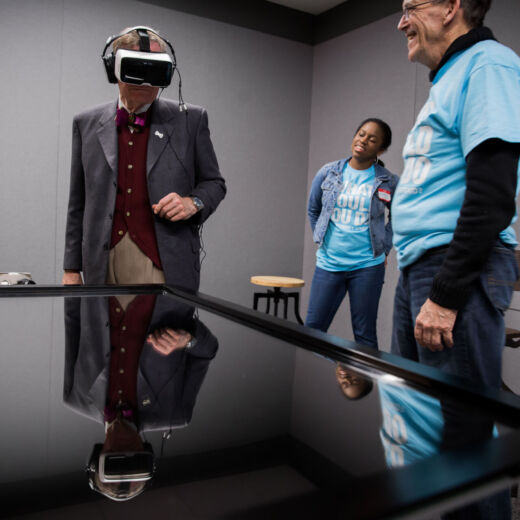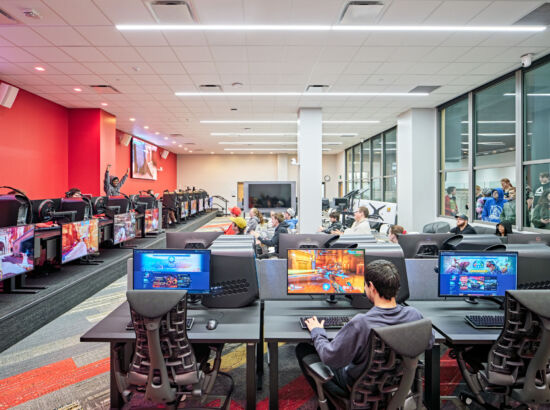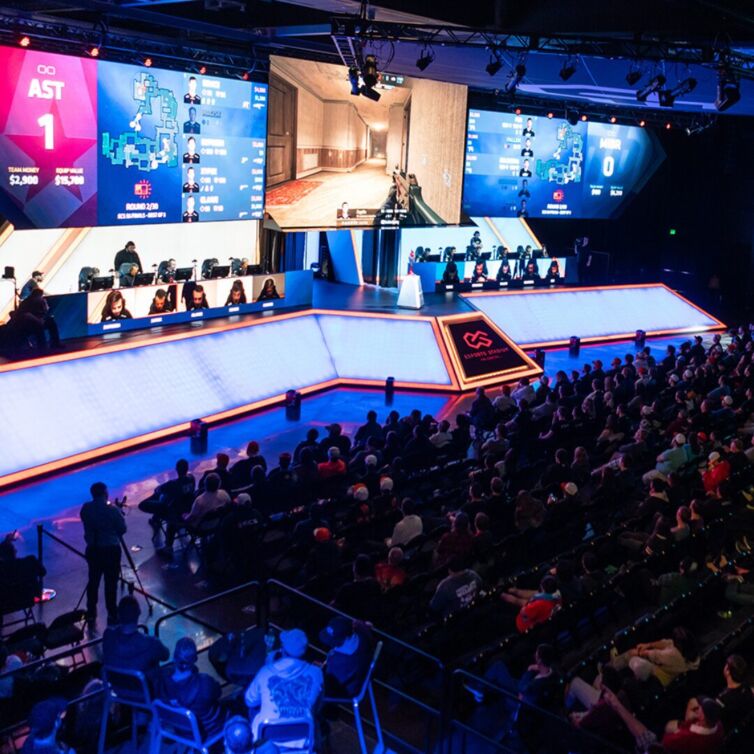Immersive Technology: A Game Changing Experience
How Immersive Tech Design Affects End Users | January 16, 2025
When we think of exhibits, classrooms, and similar spaces, we often picture chairs, walls, a display, history being told, or a lesson being taught. But what truly defines these spaces? What kinds of experiences do they create?
A space that fully immerses its users offers an experience much more powerful than what a traditional setting can provide.
Immersive technology, whether through virtual reality, augmented reality, or interactive multimedia, creates an environment where users are being fully absorbed in the information.

For students, this could mean stepping into a historical event instead of just reading about it or exploring the inner workings of a complex scientific process firsthand. For museum visitors, immersive exhibits can evoke powerful emotional connections, enabling them to walk through engaging simulations of historical events or explore detailed recreations of significant moments.
At Clemson University’s Watt Family Innovation Center, students and visitors are immediately engulfed in a world of interactive technology and innovation through four massive interactive video walls greeting them in the lobby.
Similarly, the hospitality simulation laboratory at Reynolds Hall at West Virginia University provides students with real-world experience, allowing them to develop hands-on skills that would be impossible to gain through traditional methods alone.
Clemson University’s Wilbur O. and Ann Powers College of Business features a business simulation laboratory that utilizes immersive technology to enhance learning, offering students a dynamic, interactive environment to solve real-world business challenges.
Even fitness spaces are embracing this shift.
At the Glasshouse Apartment Complex, the fitness areas provide immersive experiences through three 75-inch full HD displays, amplifying activities like yoga and spin classes by surrounding participants with engaging visuals.
The Brainworks space at Yale University’s Wu Tsai Institute & Department of Psychology offers a completely immersive experience for researchers, students, and participants, integrating biotechnology and data visualization laboratories for hands-on, innovative learning.

At the Indiana University of Pennsylvania, the Respiratory Care Services Center’s ultramodern simulation labs replicate real-world scenarios in healthcare, supported by observation rooms that further improve student learning through realistic feedback and practice.
When individuals feel more connected to the material, they engage more deeply, retain information longer, and develop a greater sense of empathy and understanding.
In education, these environments help turn complex concepts into experiences that students can explore directly, catering to different learning styles and making difficult ideas easier to understand.
Whether in the classroom or an exhibit, immersive experiences allow people to experience stories and lessons firsthand, instead of just watching them unfold.
These spaces also boost collaboration and creativity. For example, students in virtual settings can work together in real-time, solving problems and experimenting as a group. This kind of interactive learning sparks curiosity and makes the experience feel more personal and relevant.
Ultimately, immersive technology offers a level of engagement that traditional methods can’t, leaving a lasting impression and changing how we learn, explore, and connect with the world around us.
For more insights on our projects that implement immersive technology, check out our article on how we created an engaging eSports facility for Ferris State University.




